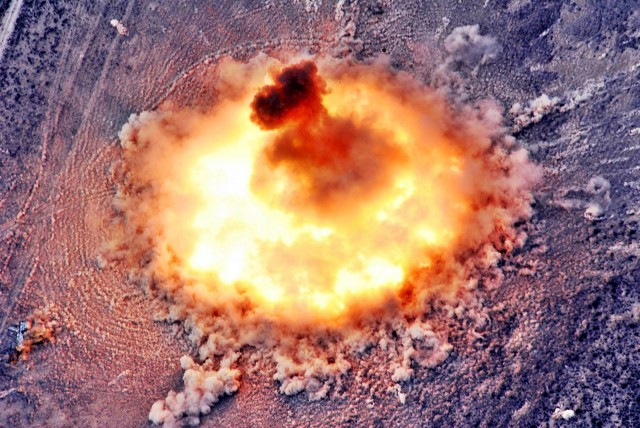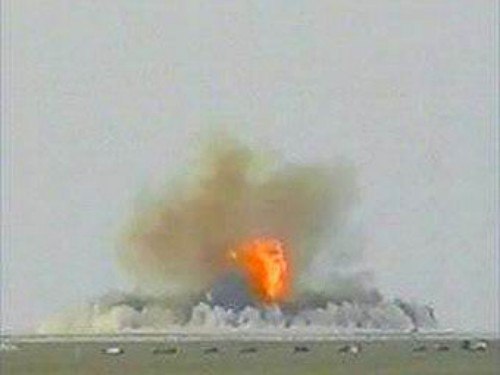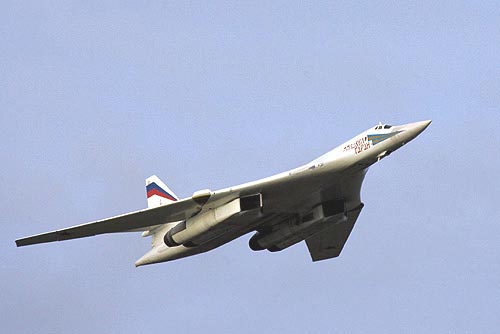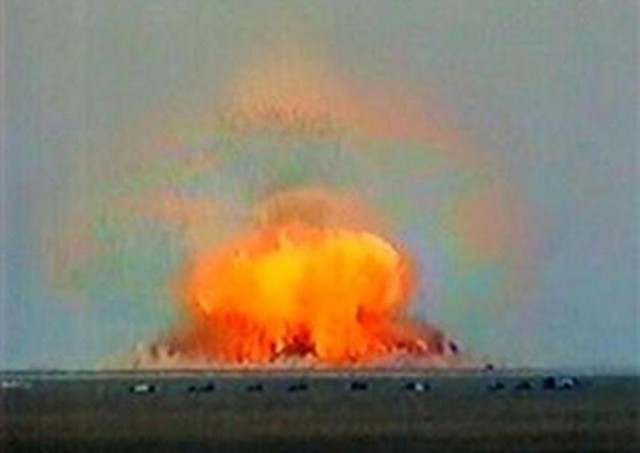“All that is alive merely evaporates,” is the quote Russian Deputy Chief of Russian General Staff Alexander Rukshin shared when asked about their newly developed bomb.
In 2007 the Russians successfully tested and released their “Aviation Thermobaric Bomb of Increased Power”, quickly nicknamed the “Father of All Bombs” (FOAB).
The FOAB is reportedly 4 x more powerful than the US military’s biggest non-nuclear bomb, the GBU-43/B Massive Ordnance Air Bomb which is officially designated with the acronym “MOAB” and known popularly as the “Mother of All Bombs.”
This makes the Russian device officially the most powerful conventional non-nuclear weapon in the world.
The FOAB replaces several smaller nuclear bombs in the Russian arsenal. It yields an equivalent of 44 tons of TNT while just using only seven tons of a new high explosive.
Its blast and pressure wave has a similar effect to a small nuclear weapon, just on a smaller scale. The bomb detonates in mid-air causing a supersonic shockwave and extreme temperatures.
Thermobaric weapons generate longer, more sustained blast waves with higher temperatures as compared to conventional explosives. Because of this, they produce more damage over larger areas than conventional weapons of similar mass.
They also differ in that they use oxygen from the atmosphere itself rather than relying on an oxidizing agent in their explosives. They produce more energy than normal happens and as a result are more difficult to control.

During the Vietnam war, the U.S. utilized similar air-fueled bombs to clear jungles to create helicopter landing areas. The Soviet Union used their air-fueled weapons during conflicts with China and Afghanistan.
Russian deputy chief of staff, General Alexander Rushkin, claims that while the new bomb is smaller than the MOAB, it is much deadlier because the temperature at the center of the blast is 2 x that of the MOAB.
Rushkin maintains the MOAB’s capabilities are comparable to a nuclear weapon, but unlike a traditional nuke which is known for radioactive fallout, the MOAB does not damage or pollute the environment beyond its blast radius.

Instead, the MOAB generates an equivalent of 11 tons of TNT from just 8 tons of high explosives. The FOAB has a blast radius of 300 meters, double that of the MOAB, while also generating temperatures twice that of the MOAB.
Controversial amongst defense experts, some of them question the yield of the bomb as well as if it can be deployed by a standard Russian Tupolev Tu-160 bomber. Wired magazine published a report analyzing Russian propaganda photos and videos and specs showing discrepancies.
Analysts maintain the bomb was designed to deploy from a slow moving cargo plane. Videos released by the Russians never show the bomb and bombers in the same shot.

Battelle senior research scientist Tom Burky is quoted saying, “It’s not even clear what kind of weapon the Russians tested.” Burky questions if the bomb was a fuel-air explosive or a thermobaric weapon.
He shares, “Fuel-air and thermobaric bombs differ in usefulness.” Burky believes the bomb shown in the video is a fuel-air explosive based on its shape.
Another expert questioning the authenticity of the Russian videos is German military analyst Sascha Lange. While speaking at Deutsche Welle, Lange pointed out the discrepancies in the Russian video and shared his skepticism.
Global Security thinks tank analyst John Pike tends to believe the weapon is as powerful as the Russian claim it is. Pike, however, does not believe the weapon is as new as is claimed. Pike believes the Russians have possessed thermobaric weapons for at least four decades.
Pike states, “These are fuel-air explosives, designed to generate intense blast pressure over a large area. It is reported that the Russian bomb is a so-called thermobaric bomb that produces both blast and heat.
The Russian military has been a pioneer in the development and use of these thermobaric weapons. This would have to be one of the largest deliverable, droppable bombs in military history.”
Jane’s Information Group editor, Robert Hewson, shared with the BBC that it was likely the FOAB does indeed represent the world’s biggest non-nuclear bomb.
“You can argue about the numbers and how you scale this, but the Russians have a long and proven history of developing weapons in the thermobaric class,” Hewson said. UPI claimed the device “would enormously boost Russia’s conventional military capabilities.”

